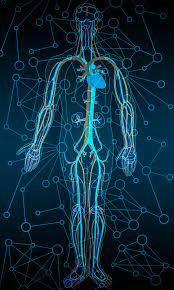
0313_NWLD_Advanced Hemodynamics for Critical Care_Live_12/02/24
Description:
This course is designed for nurses and pharmacists who have a basic understanding of hemodynamics and have cared for critically ill patients for at least one year. This course will cover topics including an in-depth review of basic hemodynamic assessment, past and present hemodynamic monitoring, and application of the expected treatment of flawed hemodynamics for patients in shock.
Target Audience
Nurse Practitioner (NP)
Nurse, Registered (RN)
Pharmacists (PharmD)
Physician Assistant (PA)
Learning Objectives
By the end of this program, participants will be able to:
Analyze the major cardiovascular factors that affect hemodynamics and shock.
Evaluate static and dynamic hemodynamic parameters in critically ill patients.
Determine interventions that will likely improve perfusion in shock.
Assembly Bills 1195 & 241- Providing Culturally Appropriate Care which is Free of Implicit Biases:
- Loccoh, E. C., Joynt-Maddox, K. E., Wang, Y., Kazi, D. S., Yeh, R. W., Wadera, R. K. (2022) Rural-Urban disparities in outcomes of myocardial infarction, heart failure, and stroke in the United States. J Am Coll Cardiol. 79(3), 267-279. https://doi.org/10.1016/j.jacc.2021.10.045
- Shirey, T. & Morris, A. (2019). Different lenses for the same story: Examining how implicit bias can lead us to different clinical decisions for the “same” patient. JAHA:8(22). https://www.ahajournals.org/doi/full/10.1161/JAHA.119.014355
- Grinstein, J., Sinha, S., Goswami, R., Patel, P. Cyrille-Superville, N., Neyestanak, M., Feliberti, J., Snipelisky, D., Devore, A., Najjar, S., Jeng, E., & Rao, S. (2023). Variation in hemodynamic assessment and interpretations: A call to standardize the right heart catheterization. Journal of Cardiac Failure; 29(11): 1507-1518. https://doi.org/10.1016/j.cardfail.2023.06.009
Disclosure of Financial or In-Kind Commercial Support & Conflict of Interest
No one involved in the planning or presentation of this educational activity have any relevant financial relationship(s) to disclose with ineligible companies whose primary business is producing, marketing, selling, re-selling, or distributing healthcare products used by or on patients. No financial or in-kind commercial support was received to produce or promote this educational activity.
– Provider Designee/Verification: Kerri Maya, PhD(c), MSL, RN, NPD-BC

In support of improving patient care, Sutter Health, is jointly accredited by the Accreditation Council for Continuing Medical Education (ACCME), the Accreditation Council for Pharmacy Education (ACPE), the American Nurses Credentialing Center (ANCC), and the Association of Social Work Boards (ASWB) to provide continuing education for the healthcare team.
Credit Designation Statement
Sutter Health designates this LIVE activity for a maximum of 4.75 AMA PRA Category 1 Credits™ for physicians, 4.75 knowledge-based contact hours for pharmacists, and 4.75 continuing professional development contact hours for nurses. Learners should claim only the credit commensurate with the extent of their participation in the activity.
Note to Other Disciplines: AMA PRA Category 1 Credits HOURS™ Continuing Medical Education is acceptable for meeting the continuing education requirements for Pharmacists, Physician Assistants, Psychologists, Registered Nurses, and Respiratory Care Practitioners. For other disciplines, please check with the regulatory board for your discipline to confirm what type of credits meet the continuing education requirements. Continuing education hours for nurses accredited by ANCC, via Joint Accreditation.
Attendance & Credit Claiming
Enter the 6-letter attendance verification code when prompted in the Attendance Course Object within the course outline. Please review the course instructions for pictorials of the steps to take when registering for the course.

 Facebook
Facebook X
X LinkedIn
LinkedIn Forward
Forward